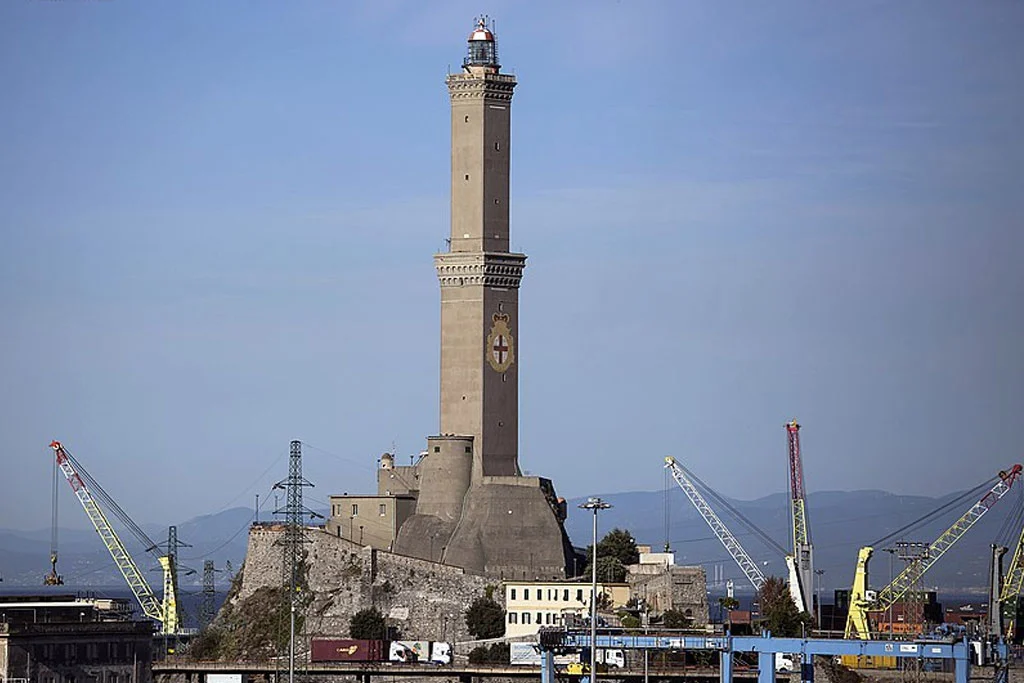Lighthouses, with their majestic presence on coastlines and remote islands, have been guiding sailors safely through treacherous waters for centuries. These towering structures are more than just navigational aids; they are symbols of hope and safety, often standing in areas where human intervention is minimal but crucial. This article delves into the history, purpose, and some of the largest lighthouses in the world.
The History of Lighthouses
Lighthouses date back to antiquity, with the Pharos of Alexandria, built around 280 BCE, being one of the earliest and most famous. This ancient lighthouse, regarded as one of the Seven Wonders of the Ancient World, stood around 100 meters tall and helped guide ships safely into the busy harbor of Alexandria, Egypt.
The development of lighthouses continued throughout history, with many civilizations understanding the importance of such structures in aiding maritime travel. In medieval Europe, lighthouses were often simple towers with open fires or braziers lit at the top. As technology advanced, so did the sophistication of lighthouses, evolving into structures that use lenses and electric light sources to enhance visibility.
Purpose of Lighthouses
The primary purpose of a lighthouse is to serve as a navigational aid, particularly at night or in foggy conditions when visibility is poor. They mark dangerous coastlines, hazardous shoals, reefs, rocks, and safe entry points into harbors. Each lighthouse has a distinctive pattern of flashes, known as its “light signature,” so sailors can identify which lighthouse they are seeing from afar.
In addition to providing light, lighthouses often serve as daymarks, meaning their physical appearance during daylight hours helps mariners determine their position. The unique shapes and colors of lighthouses, as well as their geographic locations, make them easily identifiable during the day.
Modern lighthouses use powerful rotating lights, often fitted with Fresnel lenses, which were first developed in the 19th century. These lenses magnify the light source and focus it into a beam that can travel long distances, sometimes over 20 nautical miles. A lighthouse’s height and the intensity of its light determine how far the beam can reach.
Some lighthouses also have sound systems, like foghorns, to guide ships when visibility is reduced by weather conditions.
The Biggest Lighthouses in the World
While many lighthouses are designed for function over size, several have become notable landmarks due to their sheer height and grandeur. Here are some of the largest and most impressive lighthouses from around the globe.
1. Jeddah Light, Saudi Arabia
- Height: 133 meters (436 feet)
- Location: Port of Jeddah
- Description: The tallest lighthouse in the world, the Jeddah Light is located on the Red Sea coast. It serves as both a functional lighthouse and a control tower for the port of Jeddah. Built with modern architectural elements, it plays a significant role in guiding vessels safely to one of the busiest ports in the region.
2. Pangasinan Lighthouse, Philippines
- Height: 101 meters (331 feet)
- Location: Pangasinan Province
- Description: A historic and towering lighthouse in the Philippines, it remains one of the tallest in Asia. Its light guides ships navigating the South China Sea, and it stands as a symbol of resilience after withstanding many natural calamities.
3. Yokohama Marine Tower, Japan
- Height: 106 meters (348 feet)
- Location: Yokohama
- Description: This famous lighthouse is also a tourist attraction due to its panoramic views of Yokohama and Tokyo. It was built in 1961 to commemorate the centenary of Yokohama’s port opening. Despite its immense height, it is uniquely integrated into the urban landscape.
4. Île Vierge Lighthouse, France
- Height: 82.5 meters (271 feet)
- Location: Île Vierge, Brittany
- Description: The tallest traditional lighthouse made of stone, the Île Vierge Lighthouse is located off the coast of Brittany. It was constructed in 1902 and remains a vital navigational aid in the Atlantic waters, known for their unpredictable weather conditions.
5. Cape Hatteras Lighthouse, United States
- Height: 63 meters (207 feet)
- Location: North Carolina
- Description: Known for its distinctive black-and-white spiral pattern, the Cape Hatteras Lighthouse is the tallest in the United States. It stands on the treacherous Outer Banks, a region notorious for shipwrecks due to shifting sandbanks and strong currents.
6. La Lanterna, Italy
- Height: 77 meters (253 feet)
- Location: Genoa
- Description: Built in 1543, this historic lighthouse has been guiding ships into the port of Genoa for centuries. As one of the oldest active lighthouses in the world, it is a prominent symbol of Genoa’s maritime heritage.

Genova Lanterna
The Role of Lighthouses Today
Though modern navigation relies heavily on advanced technology such as GPS, lighthouses still play an important role in maritime safety. They serve as a backup system when electronic devices fail, providing a reliable point of reference for sailors. Many have also become tourist attractions, offering visitors a glimpse into the maritime history and a chance to experience breathtaking coastal views.
In addition, many lighthouses have been automated, requiring no permanent human presence. However, a few, particularly those in remote locations, still maintain lighthouse keepers, preserving the human element that has been part of their history for so long.
Lighthouses as Cultural Icons
Lighthouses are more than just navigational aids; they have captured the imaginations of artists, writers, and travelers for centuries. They are often seen as metaphors for guidance, safety, and resilience against the forces of nature. Many lighthouses have become cultural landmarks, symbolizing the enduring relationship between humanity and the sea.
For example, the Cape Hatteras Lighthouse has inspired countless books and documentaries, while the Peggy’s Point Lighthouse in Nova Scotia is a beloved tourist attraction and an iconic representation of Canada’s rugged coastline.
Lighthouses stand as testaments to human ingenuity, courage, and our connection to the sea. While technology may evolve, the sight of a lighthouse beacon cutting through the darkness continues to evoke a sense of awe and reassurance. These towering structures remain important symbols, guiding both sailors and the curious traveler along the vast, mysterious waters of the world.
Whether you’re fascinated by their history, drawn to their architectural beauty, or captivated by their symbolism, lighthouses will always have a special place in our hearts and on our coastlines.

